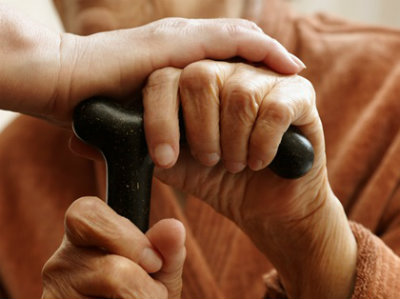
This article is part of Community Care’s campaign to Stand up for Social Work. We’re standing up for social work by being honest, offering support and providing inspiration.
You can stand up for social work by:
- Taking one action and telling us what it is
- Sharing this article
- Sharing what you’ve done to make a difference today
- Writing a letter to your MP
- Changing your profile picture

Mrs H was severely deaf, partially sighted, diabetic with heart problems and multiple other health issues. She was also beginning to get low in mood.
Her daughter did the majority of the caring for her but had made a request to social services for a respite placement to allow her to go on holiday.
I was asked to do an assessment to determine if the criteria was met for respite care and had assumed it would be a matter of simply going through the questionnaire and making arrangements for the placement.
Communication problems
When I visited Mrs H in her own house it was evident that communication was a huge challenge for the purposes of the assessment as she could hear hardly anything I was saying. I needed the support of her daughter who could distinguish the tones more easily. I still tried hard to engage and held her hands to show I was listening.
At the end of the assessment I found that, the long list of health issues aside, Mrs H was actually quite independent and had been managing at home with minimal support. However, her daughter felt that she would be best placed in respite care whilst she was away.
Purpose of the respite care
I felt I needed to unpick this and discuss it further. It became apparent that whilst Mrs H clearly had support needs, the respite care was more for her daughter’s benefit than to specifically meet Mrs H’s needs.
I discussed the situation with the daughter, pointing out that her mother’s poor sight, unfamiliarity with a new environment, the impact of institutionalisation (in terms of de-skilling and dependence) and Mrs H’s inability to converse with people in that environment due to her severe hearing loss might actually make respite a bad choice. I felt a better option would be for Mrs H to remain at home with a good level of visiting support.
Mrs H’s daughter came around to this idea and we went for it – noting that this was a calculated risk.
Calculated risk
But the support went really well and the company were more than willing to work flexibly with Mrs H and her daughter to make best use of the allotted time to meet need. Things went so well that the care was left in place when Mrs H’s daughter returned from her holiday. We also worked to maximise communication aids. When I visited several weeks later Mrs H looked fabulous. She presented as more confident and happy and had even started engaging more with her peers who had been isolating her. I felt really pleased that the right course of action had been taken as did her daughter.”
Alison Harris is a social worker with older people in the West Midlands. Her story is used here with kind permission of The College of Social Work. If you would like to tell us your story and how you have made a difference either use the comments below or email us on CommunityCare@rbi.co.uk. Follow our Stand Up For Social Work campaign.


 Assistive technology and dementia: practice tips
Assistive technology and dementia: practice tips  A trauma-informed approach to social work: practice tips
A trauma-informed approach to social work: practice tips 




 Find out how to develop your emotional resilience with our free downloadable guide
Find out how to develop your emotional resilience with our free downloadable guide  Develop your social work career with Community Care’s Careers and Training Guide
Develop your social work career with Community Care’s Careers and Training Guide  ‘Dear Sajid Javid: please end the inappropriate detention of autistic people and those with learning disabilities’
‘Dear Sajid Javid: please end the inappropriate detention of autistic people and those with learning disabilities’ Ofsted calls for power to scrutinise children’s home groups
Ofsted calls for power to scrutinise children’s home groups Seven in eight commissioners paying below ‘minimum rate for home care’
Seven in eight commissioners paying below ‘minimum rate for home care’
 Facebook
Facebook X
X LinkedIn
LinkedIn Instagram
Instagram
“I felt I needed to unpick this and discuss it further. It became apparent that whilst Mrs H clearly had support needs, the respite care was more for her daughter’s benefit than to specifically meet Mrs H’s needs.”
Isn’t respite care always for the carer’s benefit? The purpose of respite is to give unpaid (usually family) carers a break from a caring situation which has become too tiring or stressful for them to continue, usually with the aim of allowing the carer to refresh themselves and take up the caring responsibilities again. The respite should meet the cared-for person’s needs while it happens, but it is set up to meet the needs of the carer. If the carer was coping and available, no respite would be required.